HANS EBNER* (Niederdorf 1886 - 1960 Dießen am Ammersee) Am Heimweg, 1920 Öl/Leinwand, 87,4 x 65,4 cm monogrammiert Eb und datiert 20 Provenienz: Galerie Konzert Innsbruck, Privatbesitz Wien SCHÄTZPREIS: °€ 2.000 - 4.000 Österreichischer Maler des 20. Jahrhunderts. Vertreter des Farbexpressionismus. Einfluss von Kubismus, Kinetismus und Futurismus. Stammt aus Südtirol, studierte an der Staatsgewerbeschule in Innsbruck. Ging an die private Malschule von Moritz Weinhold nach München, ab 1907 Studium an der Akademie der bildenden Künste in München. 1926 Gründungsmitglied der Secession in Innsbruck. Schuf Tiroler Landschaften, bäuerliche Motive aber auch religiöse Szenen. Ebner besuchte von 1905 bis 1907 die Staatsgewerbeschule in Innsbruck, bevor er anschließend nach München übersiedelte und zuerst an der privaten Malschule von Moritz Weinhold und ab 1907 an der Münchner Akademie studierte. 1912 folgte ein Studienaufenthalt am Gardasee. Er lebte zuerst in Grieß am Brenner und später in Dießen am Ammersee. 1926 war Ebner Gründungsmitglied der Secession Innsbruck. In seinem Ölbild „Heimkehr von der Weide“ kontrastiert Hans Ebner ein traditionelles Sujet mit moderner Bildsprache. Dargestellt ist der Blick auf ein kleines Bergdorf, die exakt in der Bildmitte platzierte Kirche ragt prominent hervor und setzt mit ihrem hellroten Dach einen Farbakzent. Von erhöhtem Standpunkt blicken wir auf das zwischen Bergen eingebettete Tal. Drei Kühe und ein Pferd befinden sich auf ihrem Heimweg. In der Kombination mit dem idyllisch-ländlichen Bildinhalt wird die Modernität der gestalterischen Mittel deutlich. Das Bild ist im Kontext der Tiroler Malerei der 1920er Jahre auffällig progressiv: Hans Ebner splittert das Bild in kristalline Farbfelder auf und zerteilt die Bildfläche mit einem fast symmetrischen Liniengeflecht aus Diagonalen in rautenförmige und dreieckige Flächen. Die durchscheinende Struktur ist durch die Farbreduktion auf gläsern anmutende, helle Türkis- und Violetttöne verstärkt. Indem die Hügel nicht als sich überlappendes Hintereinander, sondern einander überschneidendes Ineinander aufgebaut sind, reduziert Ebner die tiefenräumliche Wirkung. Der Bildaufbau aus ineinandergeschobenen Lichtlinien und Strahlen erinnert an die futuristischen Werke des Italieners Giacomo Balla Hans Ebner lebt zeitweise in Tirol, ab 1912 am Brenner, in unmittelbarer Nähe zu Italien und dürfte die Arbeiten der italienischen Futuristen kennen. Im Unterschied zu diesen geht es Hans Ebner jedoch nicht um die Darstellung dynamischer Zeitabläufe; das narrative Moment des Bildes sind die Tiere, die sich ob ihrer weitgehend naturalistischen Darstellungsweise und abgesetzten Farbigkeit aus ihrer modernen Bildumgebung abheben. Wichtiger noch als der Einfluss der italienischen Futuristen dürften die Arbeiten der Künstlervereinigung „Der Blaue Reiter“ sein. 1913 stellt in Berlin der „Erste Deutsche Herbstsalon“ aus, in dessen umfangreichem Katalog über 90 Künstler unter ihnen Giacomo Balla und viele Maler des „Blauen Reiters“ vertreten sind. Besonders die Parallelen zu den Werken der frühen 1910er Jahre von Robert Delaunay und denjenigen Franz Marcs sind augenfällig. Marc wählt neben ähnlichen gestalterischen Mitteln auch wiederholt das Thema des in die Landschaften eingebetteten Tieres, welche er in einer komplexen Farbsymbolik zum Bedeutungsträger seiner Intention macht und in der Malerei die innere mit der äußeren Erlebniswirklichkeit zusammenführt. 1912 schreibt er über die zeitgenössischen Entwicklungen in der Kunst: „Die Kunst geht heute Wege, von denen unsere Väter sich nichts träumen ließen; man steht vor den neuen Werken wie im Traum […]; man fühlt eine künstlerische Spannung über ganz Europa“. Hans Ebner ist Teil dieser Spannung und entwickelt mit seiner „Heimkehr von der Weide“ die moderne Malerei in Tirol nach dem Ersten Weltkrieg weiter.
HANS EBNER* (Niederdorf 1886 - 1960 Dießen at Ammersee) On the Way Home, 1920 oil/canvas 87,4 x 65,4 cm monogrammed Eb and dated 20 Provenance: gallery Konzert Innsbruck, private collection Vienna ESTIMATE °€ 2.000 - 4.000 Austrian painter of the 20th century. Representative of color expressionism. Influence of Cubism, Kinetism and Futurism. Originated in South Tyrol, studied at the Staatsgewerbeschule in Innsbruck. Went to the private painting school of Moritz Weinhold in Munich, from 1907 studied at the Academy of Fine Arts in Munich. 1926 founding member of the Secession in Innsbruck. Created Tyrolean landscapes, rural motifs but also religious scenes. Ebner attended the state trade school in Innsbruck from 1905 to 1907 before moving to Munich and studying first at Moritz Weinhold's private painting school and from 1907 at the Munich Academy. In 1912 he went to study at Lake Garda. He first lived in Grieß am Brenner and later in Dießen am Ammersee. In 1926 Ebner was a founding member of the Innsbruck Secession. In his oil painting "Homecoming from the Pasture" Hans Ebner contrasts a traditional subject with modern imagery. Shown is the view of a small mountain village, the church placed exactly in the middle of the picture protrudes prominently and sets a color accent with its bright red roof. From an elevated point of view we look at the valley embedded between mountains. Three cows and a horse are on their way home. In combination with the idyllic, rural image content, the modernity of the creative means becomes clear. In the context of Tyrolean painting of the 1920s, the picture is conspicuously progressive: Hans Ebner splits the picture up into crystalline color fields and divides the picture surface into diamond-shaped and triangular areas with an almost symmetrical network of diagonal lines. The translucent structure is reinforced by the reduction in color to light turquoise and violet tones that appear glassy. Because the hills are not built up as an overlapping sequence, but rather as an overlapping intertwining, Ebner reduces the spatial effect. The composition of the picture, consisting of lines of light and rays pushed into one another, is reminiscent of the futuristic works of the Italian Giacomo Balla Hans Ebner lives temporarily in Tyrol, from 1912 on the Brenner Pass, in the immediate vicinity of Italy, and is likely to be familiar with the work of the Italian Futurists. In contrast to these, however, Hans Ebner is not interested in depicting dynamic time sequences; The narrative element of the picture is the animals, which stand out from their modern pictorial environment due to their largely naturalistic depiction and contrasting colour. The works of the artists' association “Der Blaue Reiter” are probably even more important than the influence of the Italian Futurists. In 1913 the “First German Autumn Salon” exhibited in Berlin, in whose extensive catalog more than 90 artists, including Giacomo Balla and many painters from the “Blauer Reiter” are represented. The parallels to the works of Robert Delaunay in the early 1910s and those of Franz Marc are particularly striking. In addition to similar creative means, Marc repeatedly chooses the theme of the animal embedded in the landscape, which he makes the meaning of his intention in a complex color symbolism and in the painting brings together the inner and outer reality of experience. In 1912 he wrote about contemporary developments in art: “Today art is taking paths that our fathers never dreamed of; one stands in front of the new works as if in a dream [...]; one feels an artistic tension over the whole of Europe”. Hans Ebner is part of this tension and with his "Homecoming from the Pasture" develops modern painting in Tyrol after the First World War.
HANS EBNER* (Niederdorf 1886 - 1960 Dießen am Ammersee) Am Heimweg, 1920 Öl/Leinwand, 87,4 x 65,4 cm monogrammiert Eb und datiert 20 Provenienz: Galerie Konzert Innsbruck, Privatbesitz Wien SCHÄTZPREIS: °€ 2.000 - 4.000 Österreichischer Maler des 20. Jahrhunderts. Vertreter des Farbexpressionismus. Einfluss von Kubismus, Kinetismus und Futurismus. Stammt aus Südtirol, studierte an der Staatsgewerbeschule in Innsbruck. Ging an die private Malschule von Moritz Weinhold nach München, ab 1907 Studium an der Akademie der bildenden Künste in München. 1926 Gründungsmitglied der Secession in Innsbruck. Schuf Tiroler Landschaften, bäuerliche Motive aber auch religiöse Szenen. Ebner besuchte von 1905 bis 1907 die Staatsgewerbeschule in Innsbruck, bevor er anschließend nach München übersiedelte und zuerst an der privaten Malschule von Moritz Weinhold und ab 1907 an der Münchner Akademie studierte. 1912 folgte ein Studienaufenthalt am Gardasee. Er lebte zuerst in Grieß am Brenner und später in Dießen am Ammersee. 1926 war Ebner Gründungsmitglied der Secession Innsbruck. In seinem Ölbild „Heimkehr von der Weide“ kontrastiert Hans Ebner ein traditionelles Sujet mit moderner Bildsprache. Dargestellt ist der Blick auf ein kleines Bergdorf, die exakt in der Bildmitte platzierte Kirche ragt prominent hervor und setzt mit ihrem hellroten Dach einen Farbakzent. Von erhöhtem Standpunkt blicken wir auf das zwischen Bergen eingebettete Tal. Drei Kühe und ein Pferd befinden sich auf ihrem Heimweg. In der Kombination mit dem idyllisch-ländlichen Bildinhalt wird die Modernität der gestalterischen Mittel deutlich. Das Bild ist im Kontext der Tiroler Malerei der 1920er Jahre auffällig progressiv: Hans Ebner splittert das Bild in kristalline Farbfelder auf und zerteilt die Bildfläche mit einem fast symmetrischen Liniengeflecht aus Diagonalen in rautenförmige und dreieckige Flächen. Die durchscheinende Struktur ist durch die Farbreduktion auf gläsern anmutende, helle Türkis- und Violetttöne verstärkt. Indem die Hügel nicht als sich überlappendes Hintereinander, sondern einander überschneidendes Ineinander aufgebaut sind, reduziert Ebner die tiefenräumliche Wirkung. Der Bildaufbau aus ineinandergeschobenen Lichtlinien und Strahlen erinnert an die futuristischen Werke des Italieners Giacomo Balla Hans Ebner lebt zeitweise in Tirol, ab 1912 am Brenner, in unmittelbarer Nähe zu Italien und dürfte die Arbeiten der italienischen Futuristen kennen. Im Unterschied zu diesen geht es Hans Ebner jedoch nicht um die Darstellung dynamischer Zeitabläufe; das narrative Moment des Bildes sind die Tiere, die sich ob ihrer weitgehend naturalistischen Darstellungsweise und abgesetzten Farbigkeit aus ihrer modernen Bildumgebung abheben. Wichtiger noch als der Einfluss der italienischen Futuristen dürften die Arbeiten der Künstlervereinigung „Der Blaue Reiter“ sein. 1913 stellt in Berlin der „Erste Deutsche Herbstsalon“ aus, in dessen umfangreichem Katalog über 90 Künstler unter ihnen Giacomo Balla und viele Maler des „Blauen Reiters“ vertreten sind. Besonders die Parallelen zu den Werken der frühen 1910er Jahre von Robert Delaunay und denjenigen Franz Marcs sind augenfällig. Marc wählt neben ähnlichen gestalterischen Mitteln auch wiederholt das Thema des in die Landschaften eingebetteten Tieres, welche er in einer komplexen Farbsymbolik zum Bedeutungsträger seiner Intention macht und in der Malerei die innere mit der äußeren Erlebniswirklichkeit zusammenführt. 1912 schreibt er über die zeitgenössischen Entwicklungen in der Kunst: „Die Kunst geht heute Wege, von denen unsere Väter sich nichts träumen ließen; man steht vor den neuen Werken wie im Traum […]; man fühlt eine künstlerische Spannung über ganz Europa“. Hans Ebner ist Teil dieser Spannung und entwickelt mit seiner „Heimkehr von der Weide“ die moderne Malerei in Tirol nach dem Ersten Weltkrieg weiter.
HANS EBNER* (Niederdorf 1886 - 1960 Dießen at Ammersee) On the Way Home, 1920 oil/canvas 87,4 x 65,4 cm monogrammed Eb and dated 20 Provenance: gallery Konzert Innsbruck, private collection Vienna ESTIMATE °€ 2.000 - 4.000 Austrian painter of the 20th century. Representative of color expressionism. Influence of Cubism, Kinetism and Futurism. Originated in South Tyrol, studied at the Staatsgewerbeschule in Innsbruck. Went to the private painting school of Moritz Weinhold in Munich, from 1907 studied at the Academy of Fine Arts in Munich. 1926 founding member of the Secession in Innsbruck. Created Tyrolean landscapes, rural motifs but also religious scenes. Ebner attended the state trade school in Innsbruck from 1905 to 1907 before moving to Munich and studying first at Moritz Weinhold's private painting school and from 1907 at the Munich Academy. In 1912 he went to study at Lake Garda. He first lived in Grieß am Brenner and later in Dießen am Ammersee. In 1926 Ebner was a founding member of the Innsbruck Secession. In his oil painting "Homecoming from the Pasture" Hans Ebner contrasts a traditional subject with modern imagery. Shown is the view of a small mountain village, the church placed exactly in the middle of the picture protrudes prominently and sets a color accent with its bright red roof. From an elevated point of view we look at the valley embedded between mountains. Three cows and a horse are on their way home. In combination with the idyllic, rural image content, the modernity of the creative means becomes clear. In the context of Tyrolean painting of the 1920s, the picture is conspicuously progressive: Hans Ebner splits the picture up into crystalline color fields and divides the picture surface into diamond-shaped and triangular areas with an almost symmetrical network of diagonal lines. The translucent structure is reinforced by the reduction in color to light turquoise and violet tones that appear glassy. Because the hills are not built up as an overlapping sequence, but rather as an overlapping intertwining, Ebner reduces the spatial effect. The composition of the picture, consisting of lines of light and rays pushed into one another, is reminiscent of the futuristic works of the Italian Giacomo Balla Hans Ebner lives temporarily in Tyrol, from 1912 on the Brenner Pass, in the immediate vicinity of Italy, and is likely to be familiar with the work of the Italian Futurists. In contrast to these, however, Hans Ebner is not interested in depicting dynamic time sequences; The narrative element of the picture is the animals, which stand out from their modern pictorial environment due to their largely naturalistic depiction and contrasting colour. The works of the artists' association “Der Blaue Reiter” are probably even more important than the influence of the Italian Futurists. In 1913 the “First German Autumn Salon” exhibited in Berlin, in whose extensive catalog more than 90 artists, including Giacomo Balla and many painters from the “Blauer Reiter” are represented. The parallels to the works of Robert Delaunay in the early 1910s and those of Franz Marc are particularly striking. In addition to similar creative means, Marc repeatedly chooses the theme of the animal embedded in the landscape, which he makes the meaning of his intention in a complex color symbolism and in the painting brings together the inner and outer reality of experience. In 1912 he wrote about contemporary developments in art: “Today art is taking paths that our fathers never dreamed of; one stands in front of the new works as if in a dream [...]; one feels an artistic tension over the whole of Europe”. Hans Ebner is part of this tension and with his "Homecoming from the Pasture" develops modern painting in Tyrol after the First World War.
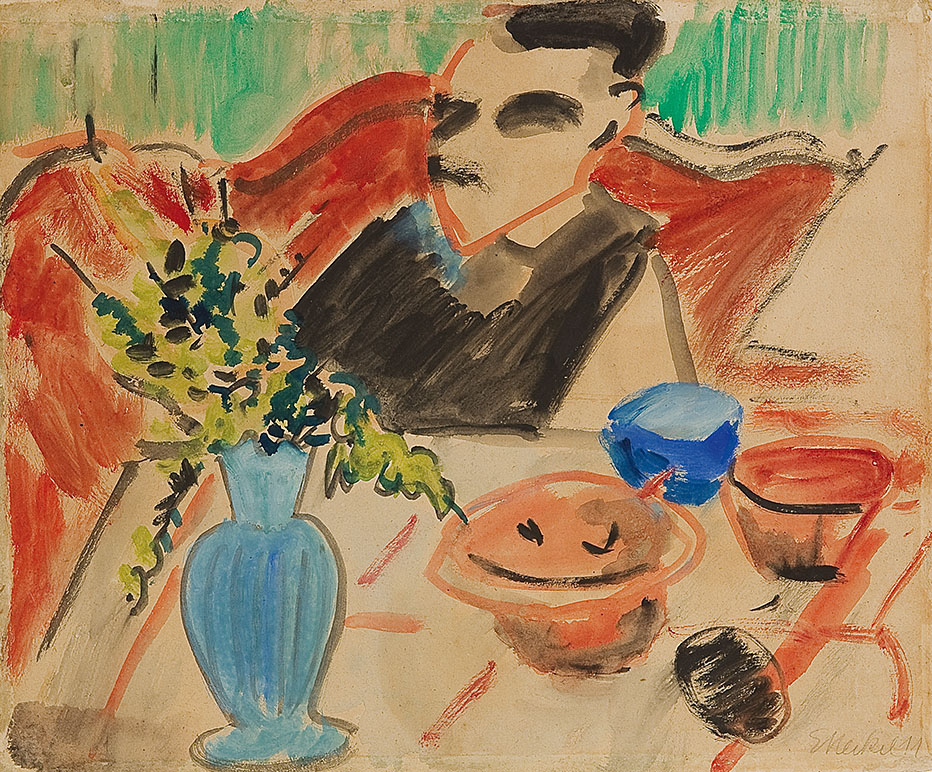
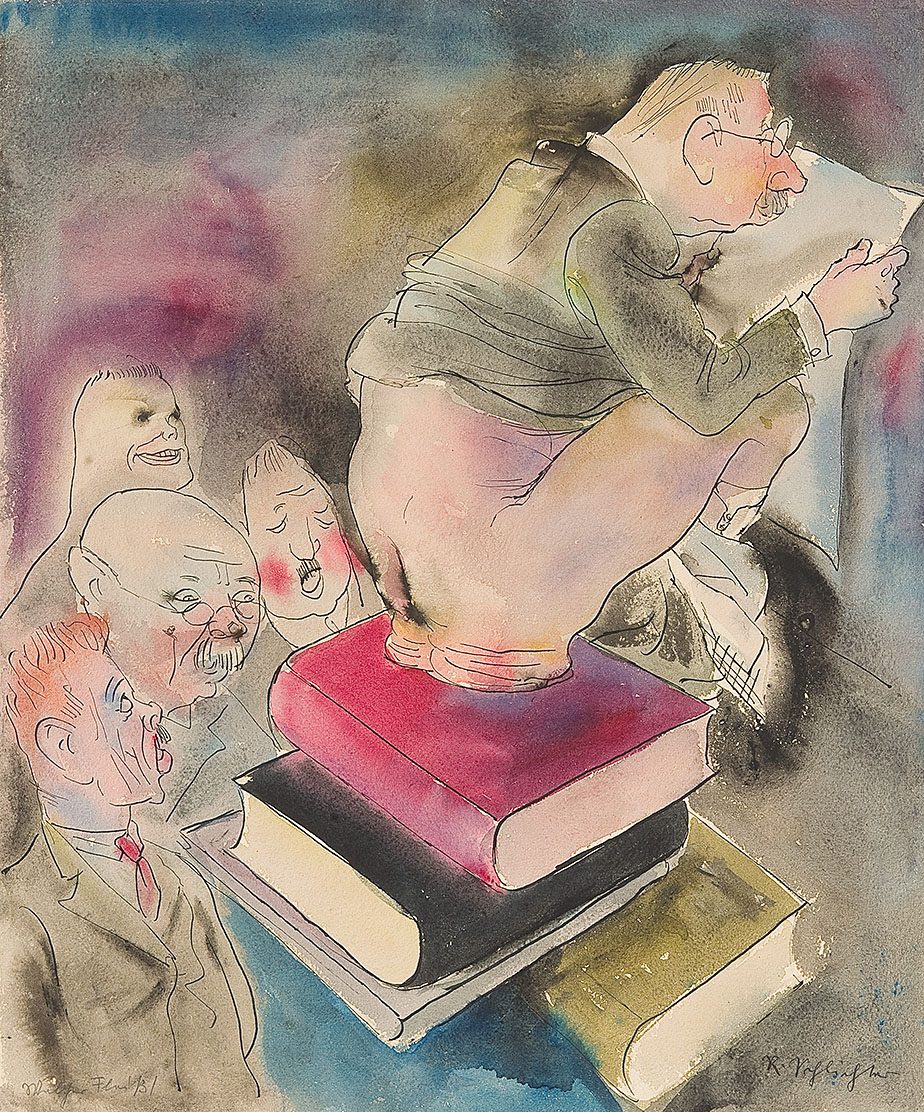
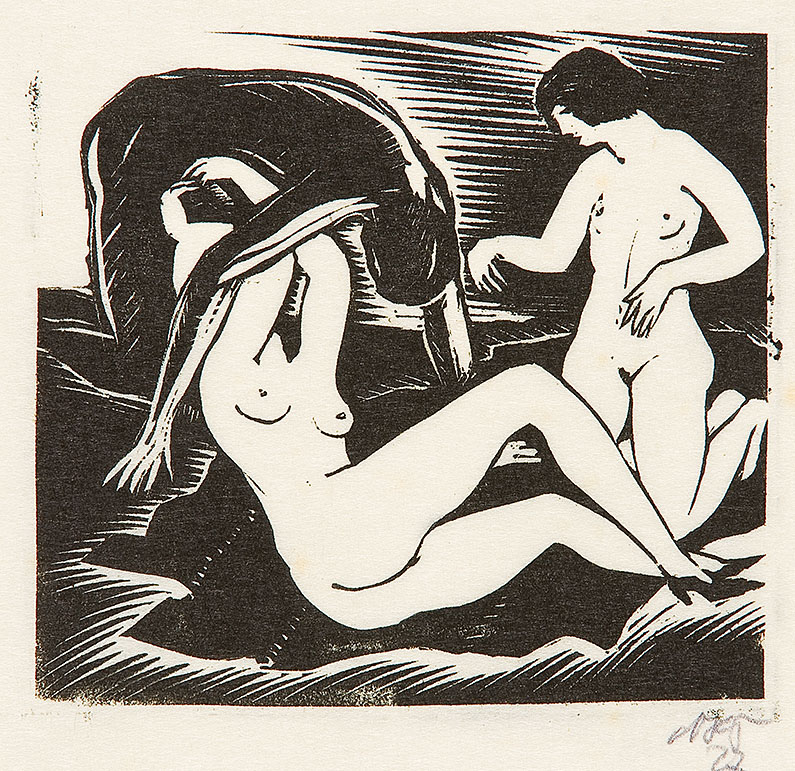
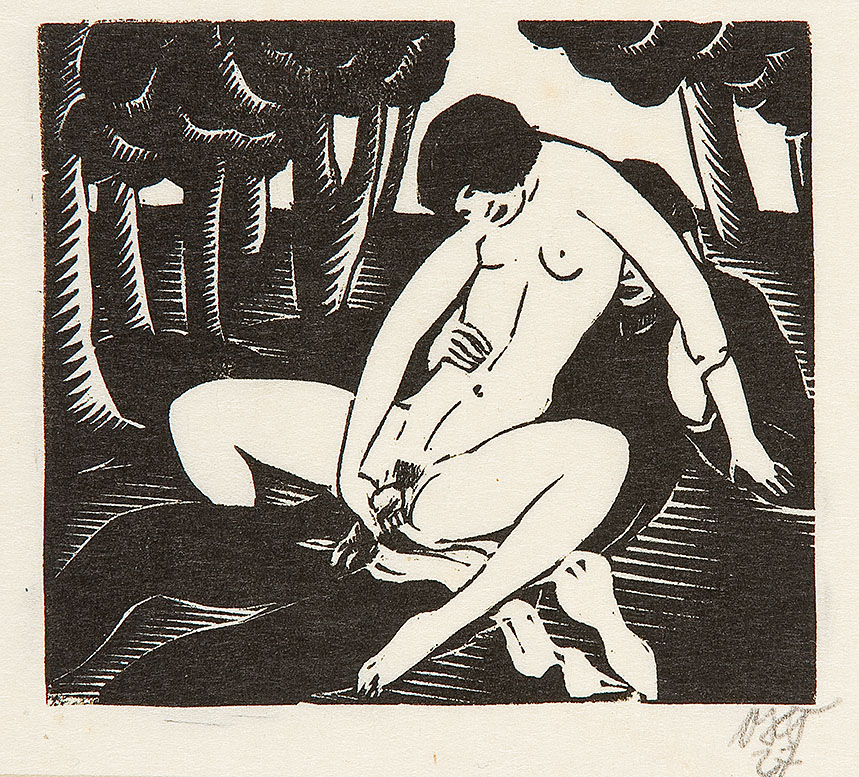
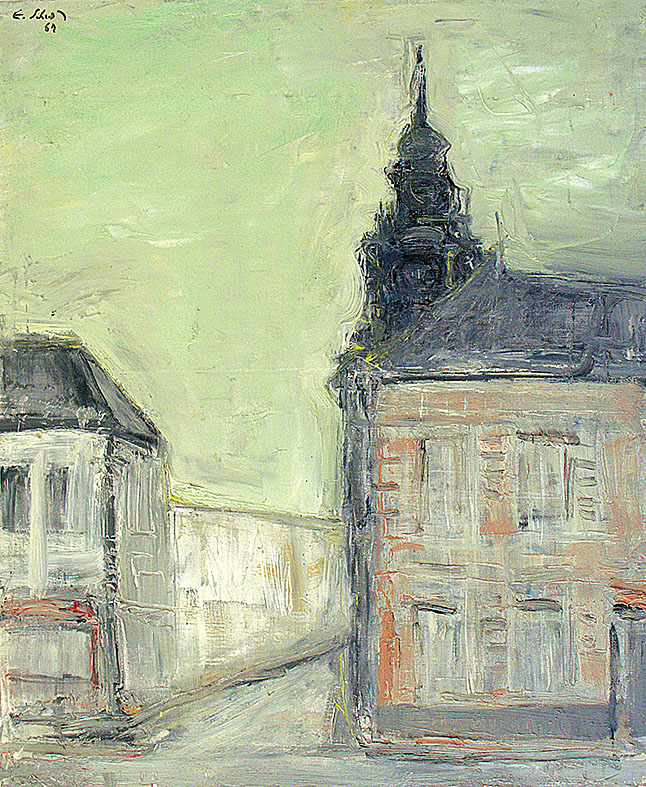

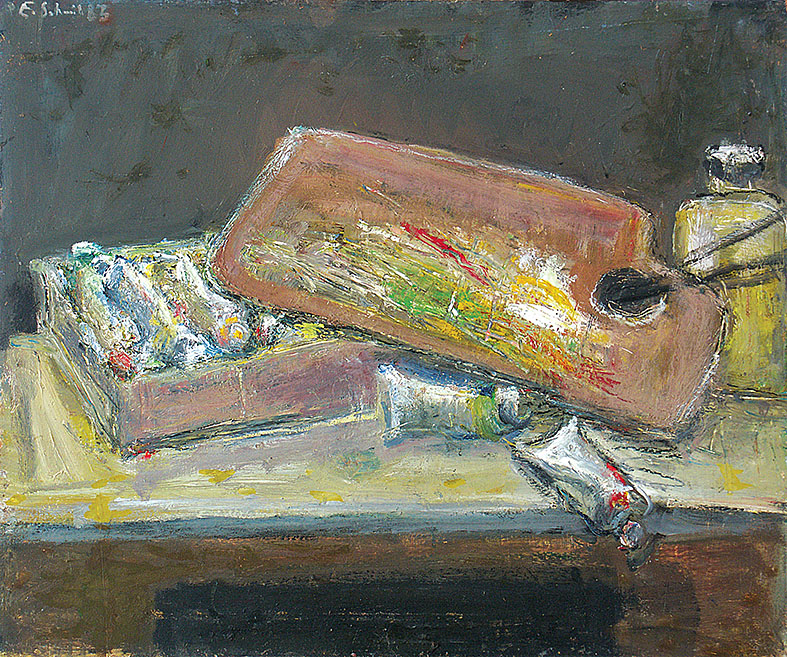
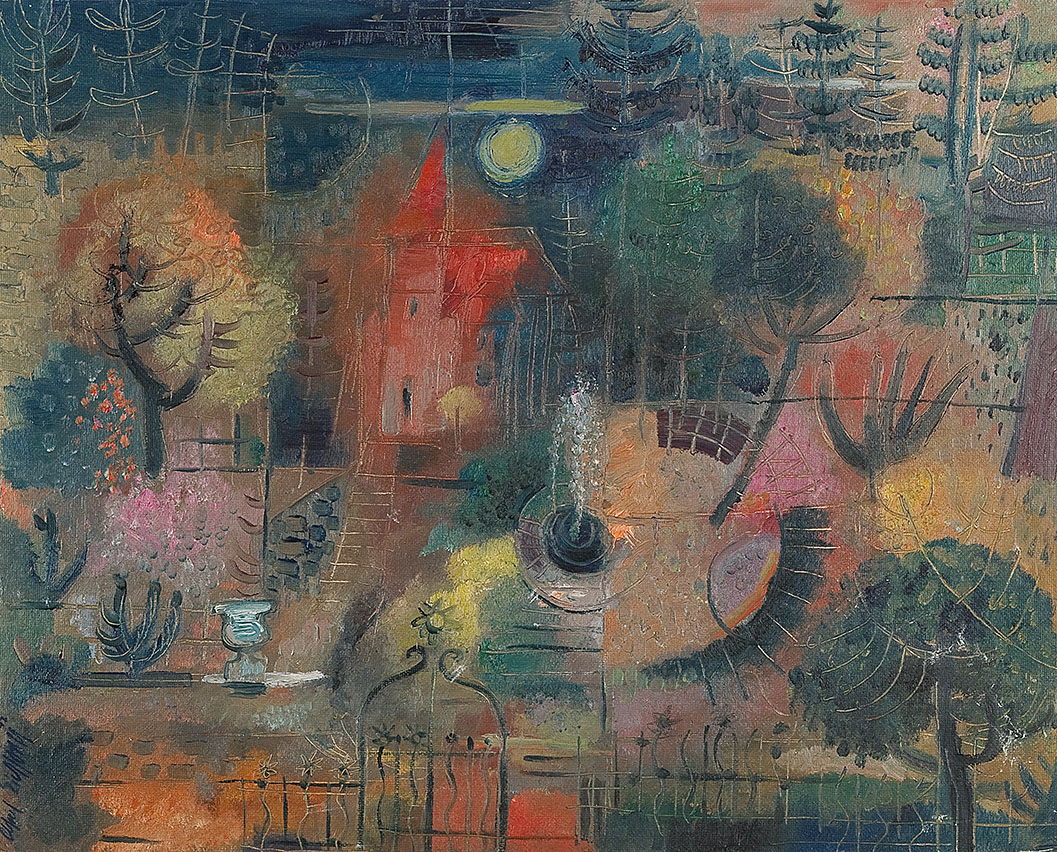
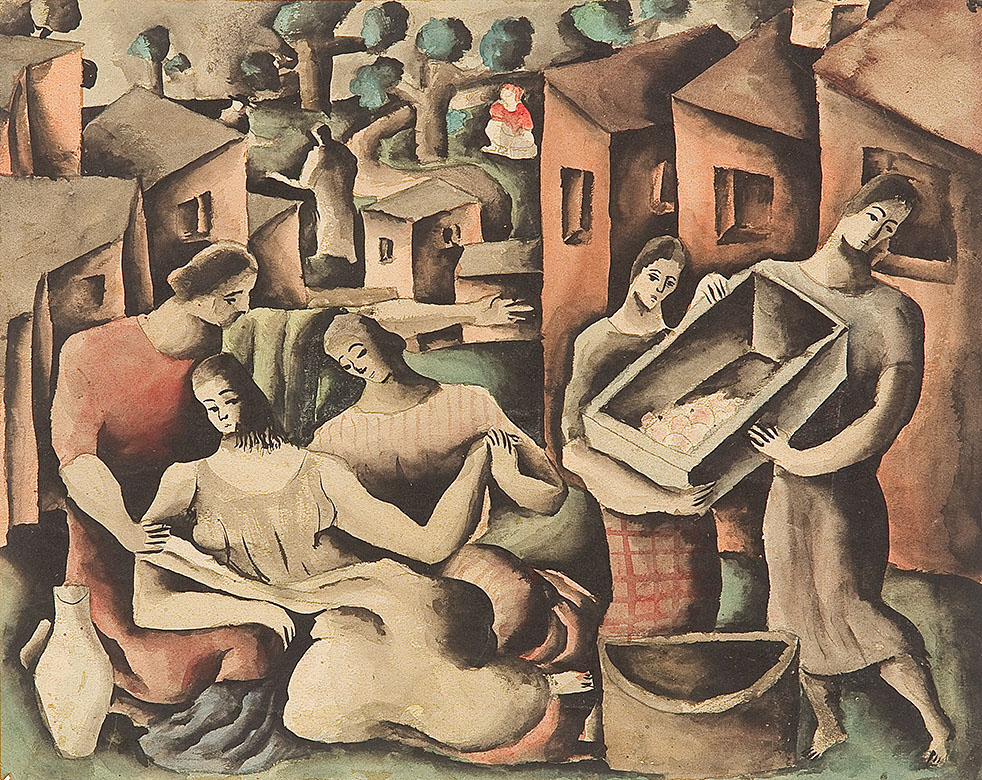
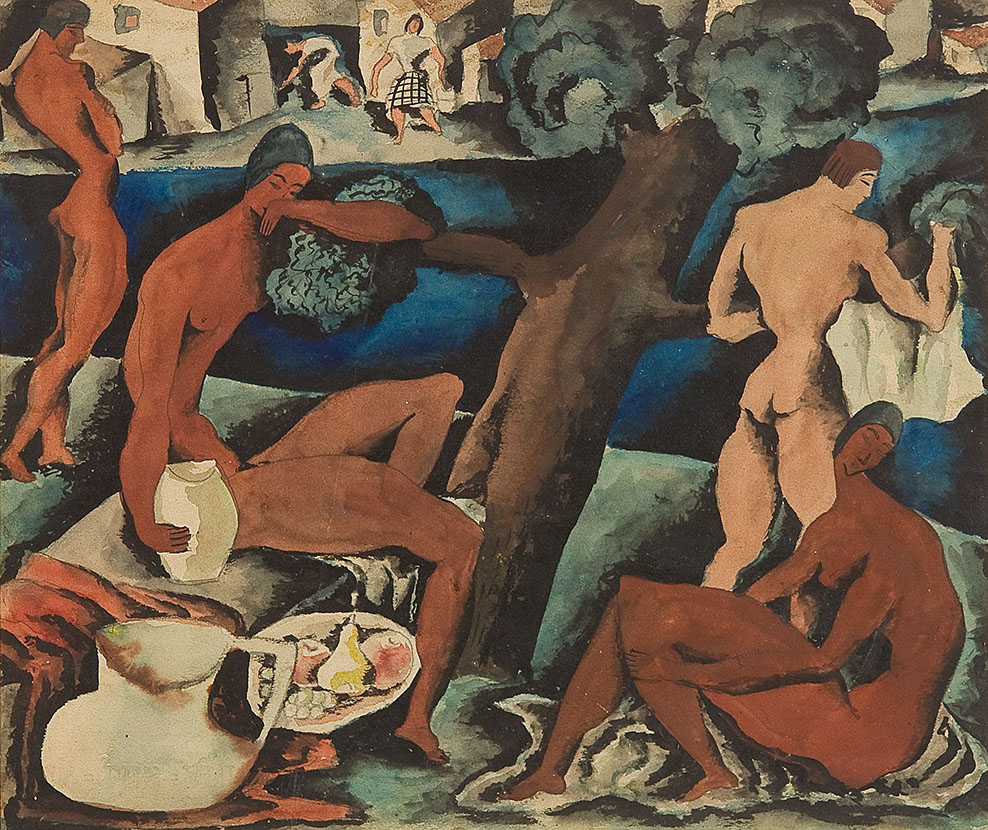
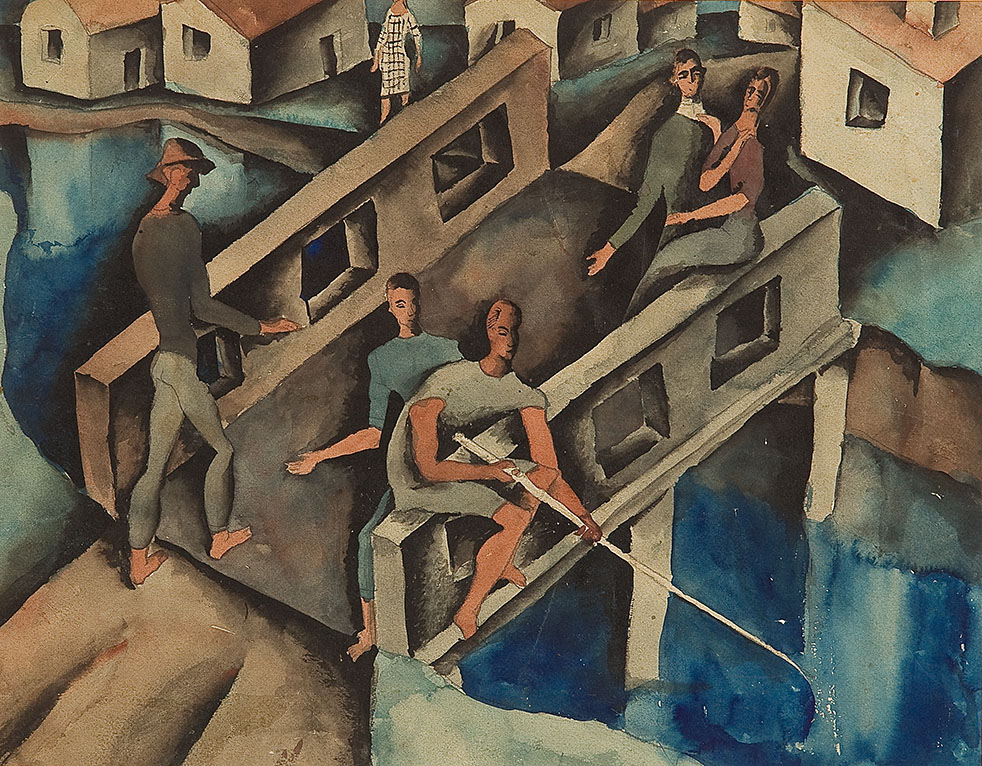
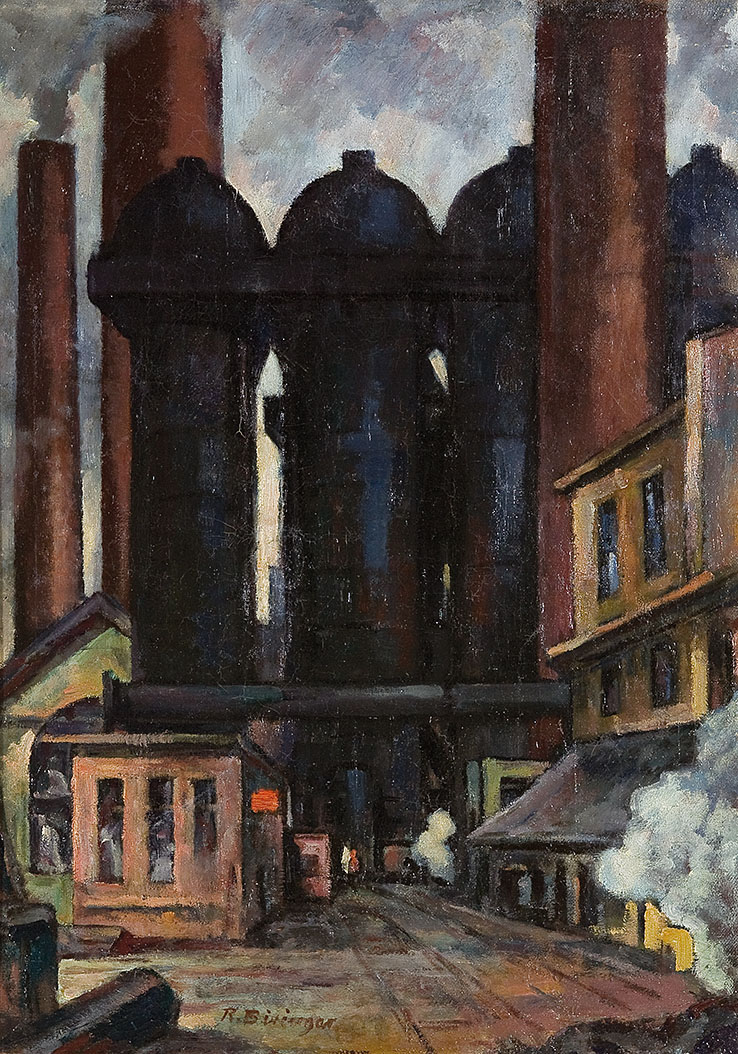
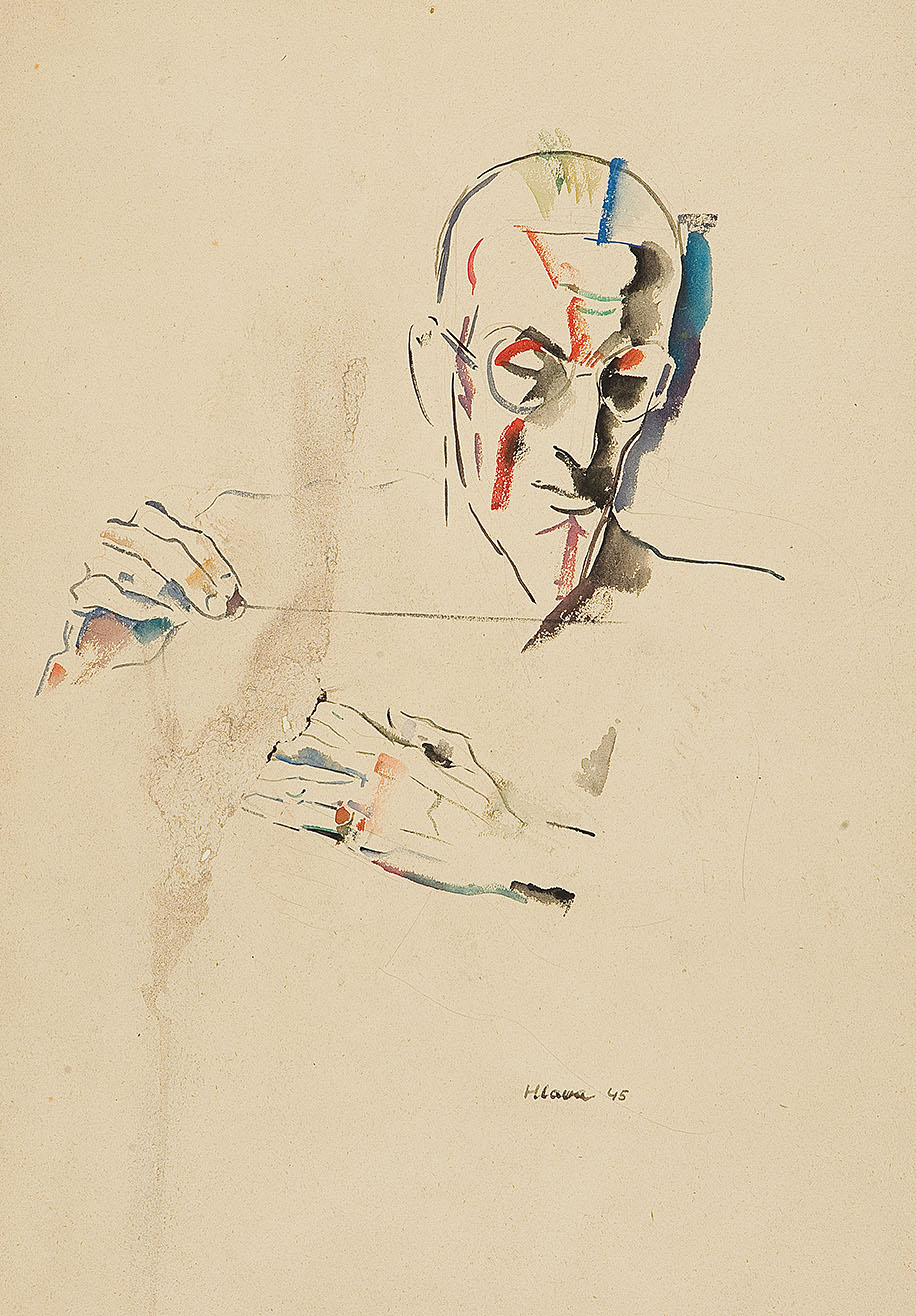
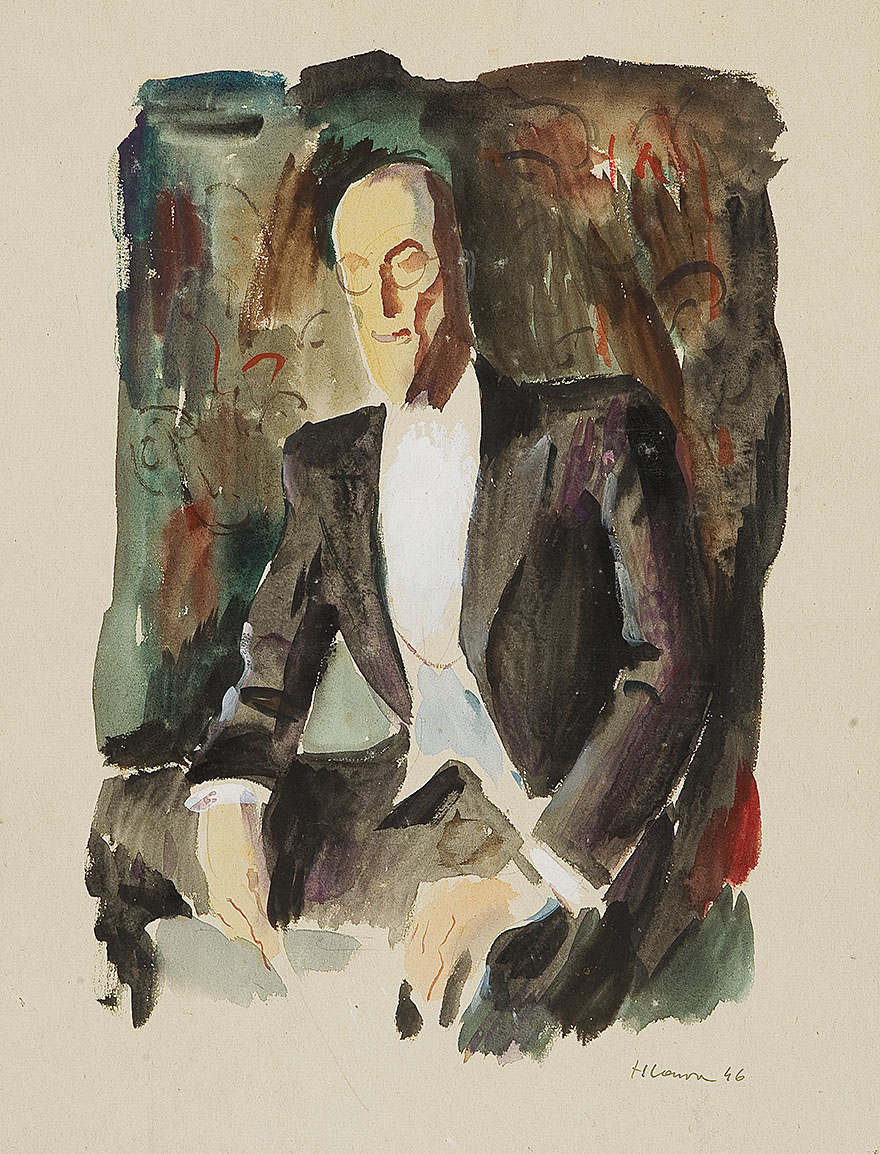
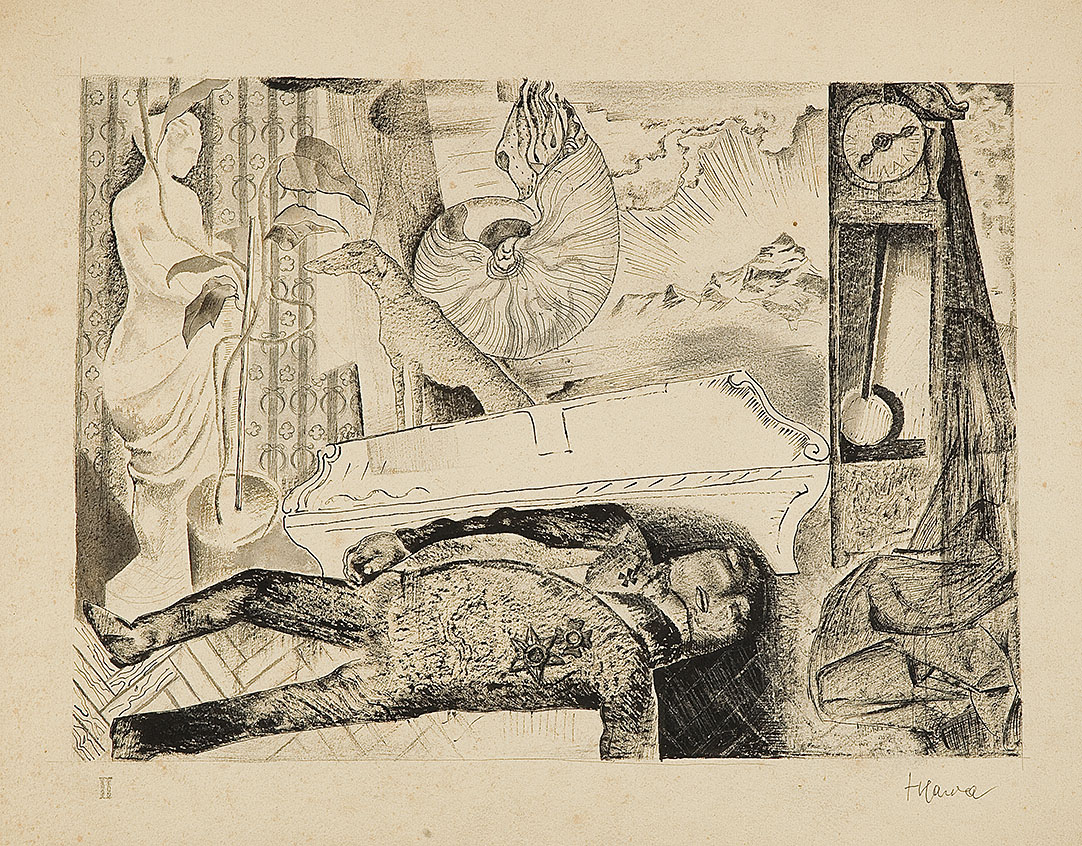
Try LotSearch and its premium features for 7 days - without any costs!
Be notified automatically about new items in upcoming auctions.
Create an alert